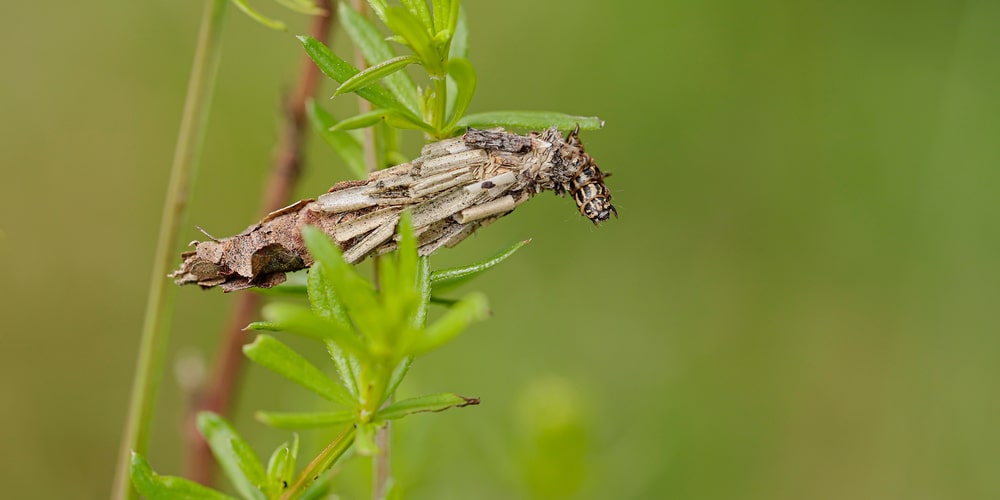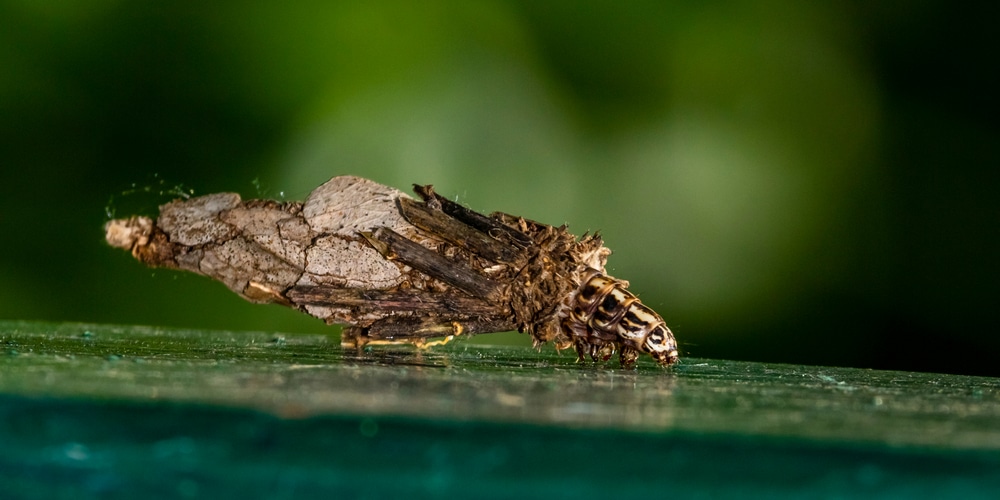Bagworms are pests that favor evergreen shrubs and trees, especially cedar, juniper, arborvitae, and spruce. These destructive insects defoliate trees quickly and can kill rows and hedges if left unchecked.
If you’re living in Kansas or Oklahoma and don’t want to experience a bagworm infestation, you’d need to know when to spray for bagworms in Kansas and Oklahoma. Let’s find out when’s the right time below.
When Should I Spray for Bagworms?

First off, you should know that there’s a very specific window on when you should spray to get rid of bagworms in your yard or garden.
However, it’s not the timing of the season when talking about when to spray for bagworms in Kansas and when to spray for bagworms in Oklahoma, but rather the timing in regards to the bagworm’s growth cycle.
Bagworms are at their most vulnerable when they’ve just hatched and are small. For the spray to be effective the bag must still be small and thin. Otherwise, the spray will have very little effect and the bagworms will continue growing and feeding on your trees and shrubs.
Once the window has passed you should resort to other bagworm elimination methods, such as removing the pests by hand.
When to Spray for Bagworms in Kansas
In Kansan gardens and yards, the best time to spray for bagworms is in late spring through early summer.
Bagworms will usually hatch by then, and the insects will still be small and rather defenseless against insecticide sprays. It’s not recommended that you spray early when the ground thaws or when temperatures start to rise, as the pests are likely to still be in their eggs.
Don’t wait until you see the bags grow in size, which usually happens in late summer because any kind of control will be ineffective and a waste of your time and resources.
The bagworm life cycle in the state is such that the eggs hatch anywhere between late May to early June. You’ll have about two to three weeks to spot their homes and see where they’ve been feeding to get an idea of where you’ll spray and how much. By late June to July or August, the bags will have grown in size, and spraying insecticide will not be effective anymore.
That said, bagworm infestations aren’t fast but the worms are thorough and merciless. They can chew up entire trees and defoliate them given enough time. Evergreen varieties are much less likely to recover after a bagworm infestation than a deciduous shrub or tree, so make sure you catch them early.
When to Spray for Bagworms in Oklahoma
June is usually the best month to spray bagworms in Oklahoma. During this time, the larvae are still small (less than an inch), and they’ll be vulnerable to insecticides.
Before spraying, you should carefully inspect your trees and shrubs for bags that were left over from last year. As for the season, you should spray starting late spring through early summer, or early June to cast the widest net for these pests.
Much like spraying for bagworms in Kansas, treatment should be done right after the eggs have hatched. Doing so reduces the risk of a heavy infestation and infection. It’s important to break the annual cycle for your evergreens’ health so you won’t have to deal with a severely defoliated shrub or tree every year.
You can take the manual route of handpicking the bagworms as you see them, then putting the insects in soapy water. Or, you can go the insecticidal spray route where there are a few options available.
The recommended sprays for bagworms are pyrethroid-based products such as spinosad, carbaryl, diazinon, or malathion. Alternatively, you can use BT, or bacillus thuringiensis to get rid of bagworms in your yard or garden. Others have reported varying degrees of success with indoxacarb or chlorantraniliprole.
When spraying insecticidal products it’s best to wear protective clothing and glasses. Make sure to follow the manufacturer’s instructions and spray the whole affected area. Spray inside the tree to get bagworms that may be hiding deep within the foliage as well.
You may need to repeat the insecticidal spray application a few more times to achieve the desired effect. Afterward, inspect your trees or shrubs for any signs of these pests and hand-pick then drop them in a bucket of soapy water.
